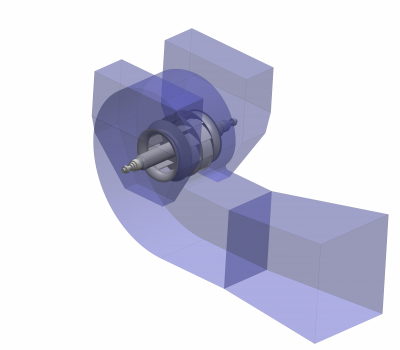Introduction
TEFUGEN specializes in the manufacturing of essential duct systems used in power plants, which consist of intricate networks of pipes, channels, and conduits. These meticulously crafted ducts serve as vital components, facilitating the controlled flow of air, gas, and various substances that are pivotal for power plant operations. Their critical roles encompass functions such as transfer of fluid to heat transfer / pollution control equipments, ventilation, heating, cooling, and exhaust management.

Air and flue gas ducts are integral components in various industrial and power generation processes. They serve multiple purposes,including
Flue Gas Transport
Flue gas ducts are primarily designed to transport hot and often corrosive combustion gases from a furnace, boiler, or other combustion equipment to various downstream components. These gases can contain pollutants and must be directed to emission control systems like scrubbers, electrostatic precipitators, or baghouses to reduce environmental impact.
Heat Recovery
Ducts can be used in heat recovery systems to capture waste heat from flue gases. This recovered heat can then be used to preheat combustion air, feedwater, or for other heating purposes within the power plant.
Ventilation
Air ducts play a crucial role in maintaining proper ventilation within a power plant. They distribute fresh air to combustion processes, control rooms, and personnel areas, ensuring a safe and comfortable working environment while facilitating the combustion process.
Cooling
Ducts can transport cooling air or water to equipment such as condensers and heat exchangers, which are essential for the cooling of various components within the power plant. Effective cooling is crucial for preventing overheating and ensuring the efficiency of these systems.
Pollution Control
Flue gas ducts direct gases containing particulate matter and pollutants to pollution control devices. These devices can include electrostatic precipitators or baghouses, which remove particulates, and scrubbers, which remove acidic gases and other harmful compounds.
Ash Handling: In coal-fired power plants, ducts are used to transport ash generated during combustion to ash handling systems, where it is collected and disposed of safely.
Pressure Regulation
Ducts are used to regulate the pressure of air or gases in certain parts of a power plant to optimize combustion and other processes.
Energy Efficiency: Properly designed duct systems can contribute to overall energy efficiency in power plants. For example, they can ensure that combustion air is distributed evenly, reducing fuel consumption and emissions.
Environmental Compliance
Air and flue gas ducts play a significant role in ensuring that power plants meet environmental regulations by controlling emissions and directing them to appropriate pollution control systems.
